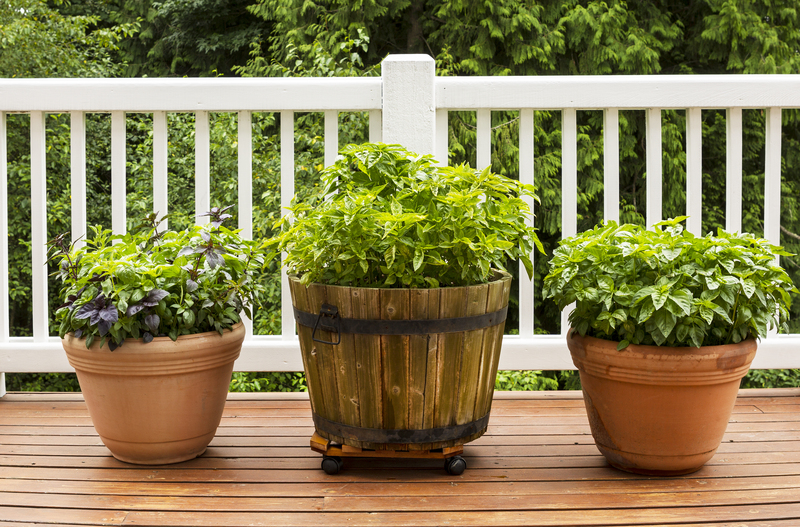Perfect Mow Timing: How Often to Trim Your Lawn?
Posted on 18/10/2025
Perfect Mow Timing: How Often to Trim Your Lawn?
Maintaining a lush, green lawn is the dream of many homeowners. A critical aspect of keeping your yard looking pristine is mowing. But how often should you mow your lawn to achieve that perfect look without damaging the grass? Here, we delve into the ideal frequency for mowing, the factors that influence mowing schedules, and the benefits of proper lawn maintenance.
Understanding Grass Growth
To determine the perfect mow timing, you need to understand how grass grows. Grass growth is influenced by several factors like species, soil type, weather conditions, and nutrient availability. Generally, grass grows faster during the warm growing seasons (spring and summer) and slows down during cooler months (fall and winter). Different grass types grow at different rates, so recognizing your grass species is essential.

Factors Influencing Mowing Frequency
Several critical factors impact how often you should mow your lawn:
1. Grass Type
Different grass species have various growth rates and height preferences. For instance, cool-season grasses such as Kentucky bluegrass, perennial ryegrass, and fescue typically require more frequent mowing during their peak growing seasons compared to warm-season grasses like Bermuda, zoysia, and St. Augustine grass.
2. Seasonal Changes
Grass growth rates vary throughout the year. In spring and summer, when grass is actively growing, you may need to mow more frequently, possibly weekly. During the cooler fall and winter months, growth slows down, and mowing can be reduced to once every two to three weeks.
3. Lawn Health
The overall health of your lawn also determines mowing frequency. A well-fertilized, adequately watered lawn with minimal thatch and no disease will grow more vigorously, requiring more frequent trimming.
4. Weather Conditions
Weather plays a significant role in grass growth. Extended periods of rain can spur rapid growth, necessitating more frequent mowing, while drought conditions can slow growth and reduce the need for mowing.
The One-Third Rule
A widely accepted guideline in lawn care is the one-third rule. This principle suggests that you should never cut more than one-third of the grass blade's height in a single mowing session. Cutting too much at once can stress the grass, making it more susceptible to disease and pest infestations. By adhering to the one-third rule, you maintain a healthier lawn that can recover quickly from each mow.
Establishing a Mowing Schedule
Establishing a mowing schedule involves balancing frequency with grass health. Typically, lawns should be mowed once per week during peak growing seasons (spring and summer) and once every two to three weeks during the cooler months (fall and winter). However, this may vary based on the factors previously discussed.
Here's a general guide for different grass types:
- Kentucky Bluegrass: Aim to mow every 5-7 days during peak growing seasons and every 10-14 days during cooler months.
- Perennial Ryegrass: Mow every 5-7 days in spring and summer and every 10-14 days in fall and winter.
- Fescue: Trim every 5-7 days in warmer months and every 10-14 days in cooler seasons.
- Bermuda Grass: Mow every 5-7 days in peak seasons and every 7-10 days during cooler periods.
- Zoysia Grass: Mow every 7-10 days in summer and every 10-14 days in cooler months.
- St. Augustine Grass: Mow every 7-14 days, depending on growth rate and weather conditions.
Mowing Techniques for a Healthy Lawn
In addition to timing, following proper mowing techniques is crucial for lawn health:
1. Keep Blades Sharp
Sharp mower blades cut grass cleanly, reducing stress and the risk of disease. Dull blades tear grass, creating jagged edges that can turn brown and become vulnerable to pathogens.
2. Mow When Grass is Dry
Mowing wet grass can lead to uneven cuts, clumping, and can spread diseases. Always try to mow your lawn when the grass is dry to ensure cleaner, more precise cuts.
3. Vary Mowing Patterns
Changing your mowing pattern regularly prevents soil compaction and encourages more upright grass growth. Mowing in the same direction consistently can create ruts and discourage even growth.
4. Leave Grass Clippings
Consider leaving grass clippings on the lawn as you mow. Clippings act as a natural fertilizer, returning essential nutrients like nitrogen back to the soil, promoting healthy growth. This process, known as grasscycling, can significantly reduce the need for additional fertilizers.

Signs You May Be Mowing Too Often or Too Little
Knowing the signs of over-mowing or under-mowing can help adjust your mowing schedule for optimal lawn health:
Over-Mowing
- Browning Tips: Grass blades with brown tips can indicate that you are cutting too frequently or too short.
- Increased Weeds: Over-mowing weakens grass, allowing weeds to establish more easily.
- Thin Lawn: Grass may appear thin and less dense due to the constant stress of frequent mowing.
Under-Mowing
- Thatch Buildup: Infrequent mowing can lead to the buildup of thatch, a layer of organic matter that can suffocate the grass and impede water and nutrient absorption.
- Uneven Appearance: Grass may appear uneven and more difficult to manage if left to grow too long.
- Pests and Diseases: Taller grass can create a favorable environment for pests and diseases that harm lawn health.
Conclusion
Finding the perfect mow timing involves considering several factors, including grass type, seasonal variations, lawn health, and weather conditions. The one-third rule serves as a helpful guideline, ensuring you mow often enough to maintain a healthy, attractive lawn without causing undue stress to the grass.
By understanding these factors and following proper mowing techniques, you can establish a consistent and effective mowing schedule that keeps your lawn lush, green, and the envy of the neighborhood. Remember, a well-maintained lawn is an ongoing project that requires attention, but the results are well worth the effort.



